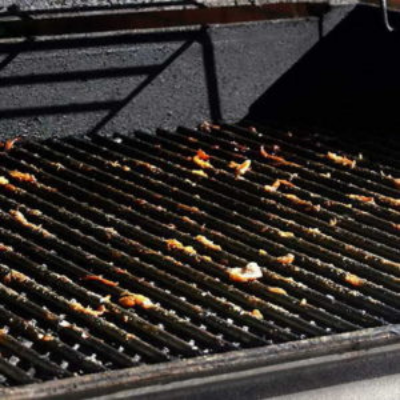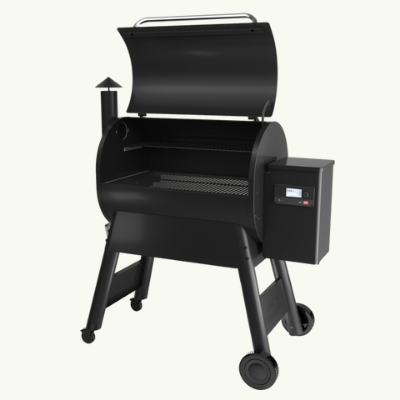A portable pellet grill holds great importance nowadays because it can be easily moved from one place to another and does not require much space. Moreover, it has many advantages over traditional grills, which make it a handy tool for picnics and parties. However, it is necessary to clean this appliance to enjoy the benefits for a long time. In the article, we will discuss “How to clean portable pellet grill.” Each step will be elaborated on in order to make it easy for everyone.
Remove any pellets left in the hopper and burn off the pellets in the auger. Shut down the grill and let it cool down. Scrub the grates with a grill brush while still in place. Clean the ash and the food particle from the grill, spray the whole grill with a cleaner, and wipe them. Wash with water to ensure no cleaning liquid can be left on the grill. Set the grill and start grilling on your clean pellet grill.
Maintaining The Metal Surface
The most important factor in the process of cleaning a portable pellet grill is maintaining its metal surface. It should be dusted or washed with detergent, then rinsed and dried after every grilling session. If it is not cleaned regularly, food particles will harden on the surface and become harder to eliminate later.

A pellet grill can also be considered an investment in health. Serving sizes with this type of grill are quite small which is convenient to clean. They are easy to use and at the same time, allow you to cook food perfectly. In addition, meat cooked on a pellet grill is clean from excessive fat because it is immediately absorbed by the sawdust briquettes.
Items required for cleaning a Pellet Grill
Cleaning the portable pellet grill after each use is imperative to maintain the grill’s health and longevity. Through meticulous cleaning and seasoning, the pellet grill’s lifespan can be extended for years. The following items are essential for effectively cleaning a portable pellet grill:
- A Grill brush and a soft cloth
- Cleaning spray
- Water (with mild detergent if necessary)
- Cooking oil/cooking spray (optional)
Parts of a Portable Pellet Grill to be Clean

The main parts of the pellet smoker that require cleaning are:
- Main body:
- Contains a pellet hopper, electronic components, and a metal workpiece.
- Fuel bowl:
- Contains fuelwood which is used to create smoke.
- Cooking grates or cooking grills:
- A grid of parallel bars over which food is placed for direct heat transfer from below and also to maintain even temperatures throughout the grill surface.
- Heating element:
- It heats up during cooking and maintains the temperature inside the pellet smoker.
- Lid:
- Helps keep meat moisture in while keeping out dirt, bugs, rain, etc.
- Drip pan:
- It is used to collect fats and liquids dripping from the food.
How to Clean Portable Pellet Grill
Cleaning a portable pellet grill is a relatively straightforward process that entails the removal of all detachable components, such as the grid itself (which can be unscrewed after turning off the grill), followed by the disassembly of parts to eliminate any lingering ash by hand or with tools designed for this specific purpose. High-budget pellet grills come with a grease management system.
Compressed air hoses are utilized to expel a substantial amount of dust and dirt from challenging-to-access areas. Specific specialized brushes or vacuum cleaners are intended for cleaning BBQ grills, while conventional household vacuum cleaners can be employed for cleaning the ash.
Step 1: Clean the Hopper
Open the hopper lid at the bottom of the cooker and remove any remaining wood pellets. After that, close the grill’s lid and turn on its control panel so that the remaining pellets in the auger will be burned out. After 15 minutes or so, open up the grill and dump the stuck pellets and ash into a trash bag or container while keeping the button open so all smoke will come out. This will also burn off any remaining residue in the hopper.
Step 2: Scrub the Grill with Brush
Take a grill brush and start removing the food particles stuck to the grill grates (before removing them from the grill) and to the side of the grill. Don’t be so harsh while scrubbing the grates, as the brush will make the finishing of the grill rough.
After scrubbing the grill, remove the grates take a paper towel, and clean the grill. This wiping will help you to remove the large particles from the grill. If you have a vacuum cleaner, the cleaning will be easier for you and will take only a few minutes to remove all the debris.
Step 3: Wash the Grill with water and detergent
Fill up a container with warm water and add cleaning detergent that will remove the hard water stains and ensure no cleaning liquid is left behind on the grill. Take the cooking grate and place it in the sink full of warm soapy water. Clean the grates with a soft cloth and rinse them under cool running water. Follow the same steps for the removable parts.
Step 4: Wipe down the metal surfaces
Using warm soapy water, wipe down all of the metal surfaces to get rid of any dirt or grease. Don’t forget to clean the inside grill, especially around the edges where food and grease can gather and cause a fire hazard. Grease is a liquid or food fats dripped from the food which is the main cause of grease fire while grilling. It becomes hard to remove when cooled down. Ensure that you can properly clean the grill before stepping to the next step.
Step 5: Season the Grill before using
Before seasoning the grill:
- Dry it properly to avoid rust, as moisture is the main culprit for making rust when in contact with the metal for a long time.
- Take a paper towel, dip it in the cooking oil, and then apply it all over the grill grates and to the inner portion.
- Close the lid of the grill and point the auger to high.
- Leave it for 15 to 20 minutes to make it seasoned well, as the oil will cover the microscopic holes within the grates.
Tips for Increasing the Life of a Grill
- Store the grill in a safe place
- When storing the pellet grill, keep it in a safe place (away from pets or children) while it is not in use.
- Use proper maintenance for the longevity of a grill
- Check the screws every time before using them.
- Inspect all food before placing it on the grill.
- Keep the grill away from high-heat areas to avoid flare-ups or fires.
- Avoid steel wool pads
- Steel wool pads can scratch or damage the finish of the grill.
- Avoid abrasive cleaning agents
- If using an abrasive cleanser for cleaning the grill, rinse it off thoroughly so that no residue is left behind.
Precautionary Measures while using a Pellet Grill
- Avoid close encounters
- Avoid standing too close to the hopper as ash can spread extremely fast, as well as placing the portable pellet grill on an unstable surface (like a towel) which can cause the legs to give out or allow for unwanted ash to leak into the kitchen. Use a fire pit mat for safety.
- Use protective gloves
- It is highly recommended to purchase a heat-resistant glove that will protect against splatters by grease and the hotness of the grill while cleaning it.
- Avoid abrasive cleaners
- Using abrasive cleaners, such as steel wool pads and some types of chemical cleaners, can damage the finish or even scratch off the paint. It is also not good for the skin as it causes allergies in some people. If used, make sure to wear washing gloves and rinse it all away thoroughly.
Frequently Asked Questions
How often should I clean the grease trap?
It is recommended to clean the grease trap of your portable pellet grill after every use. Regular cleaning will prevent grease buildup and ensure safe and efficient grilling.
What is the best way to clean a portable pellet grill?
The best way to clean a portable pellet grill is to follow a step-by-step process. Start by removing leftover pellets, burning off residue, scrubbing grates, cleaning ash and food particles, and using a cleaner. Wash with water to remove cleaning residue, wipe down metal surfaces, and season the grill before using it again.
How to clean ash out of a pellet grill?
To clean the ash out of a pellet grill, let the grill cool down, then remove any remaining pellets from the hopper and burn off pellets in the auger. Use a grill brush to scrub the grates, and clean the ash and food particles from the grill. You can use compressed air hoses to blow out dust from hard-to-reach places and vacuum cleaners designed for BBQ grills to clean ash. Be cautious and use appropriate protective gear while cleaning.
Is it safe to grill on a rainy day?
Grilling on a rainy day can be done, but precautions should be taken. Rain can affect the temperature and cooking times, and it might be challenging to maintain consistent heat. Be cautious of flare-ups caused by rainwater dripping onto hot surfaces. If using a portable pellet grill, ensure it is on a stable surface and away from any potential hazards. It’s important to exercise extra care and attention when grilling in rainy conditions.
Conclusion
The maintenance of a pellet grill is fundamental for its long lifespan. Most of the parts are removable without requiring too much effort. The cleaning process should be done at least once a month or after 25 hours of use, depending on the usage. As grills spend so much time outdoors, they often get very dirty and can become a breeding ground for bacteria if not cleaned regularly. A hot grill produces grease that runs off onto the burners and tubes through tunnels in the bottom of the cooker, which requires frequent washing and maintenance.

